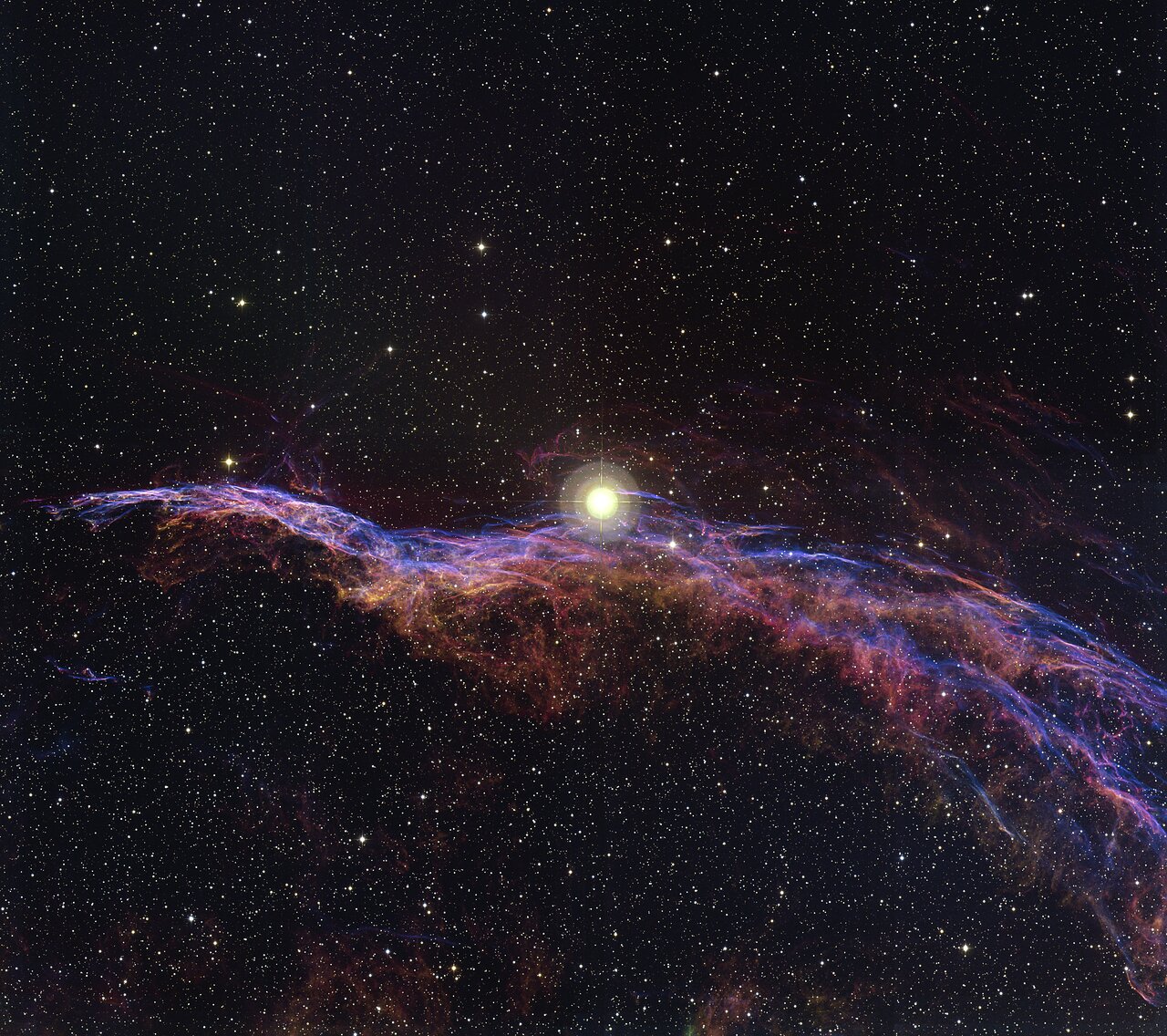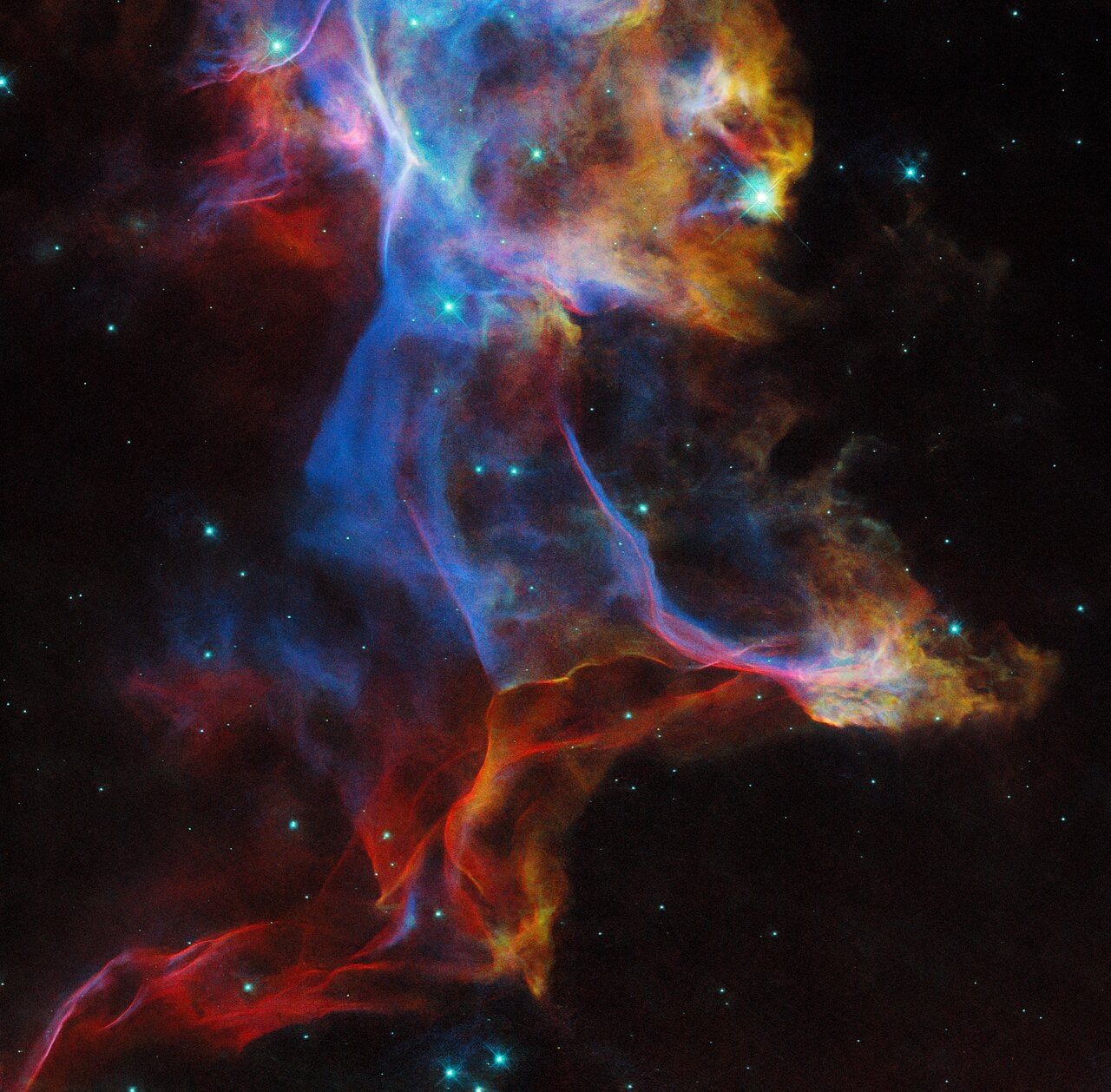We can't take our telescopic eyes off of supernova explosions. There's something compelling about natural objects so massive that they're doomed to terminate themselves in powerful explosions that outshine their host galaxies. Their patterns of shocked and lit-up gas are pleasing to the eye and ignite our curiosity. What exactly is going on to produce these gorgeous forms?
Ancient astronomers couldn't help but notice supernova explosions. They appeared in the sky for a few months and then disappeared, leading early astronomers to call them "guest stars." Astronomers Fritz Zwicky and Walter Baade played a large role in our understanding of these exploding stars and coined the term "supernova" in the 1930s. Now, almost a century later, we know much more about them, though there are still big gaps in our knowledge.
The only way to fill those gaps is by gathering more observations, and especially observations of the same supernovae over time. That's what the Hubble is doing with the Veil Nebula.
Between 10,000 and 20,000 years ago, a star about 20 times more massive than the Sun exploded as a supernova. In its death throes, it ejected layers of gas into space, which are heated, ionized, and illuminated by travelling shock waves from the explosion. The Hubble has been checking in on the supernova remnant, called the Veil Nebula, every few years to see how it behaves as it expands.
The Veil Nebula is part of a larger structure called the Cygnus Loop, a huge supernova remnant that spans about 120 light-years. The Cygnus Loop is so large that several of its components have their own names and designations. The Veil Nebula is the visible part of the loop.
.png) TheGALEXUV satellite captured this image of the Cygnus Loop nebula. The Veil Nebula is labelled as the Western Veil in this image, another of its common names. Image Credit: By Elphion - This file was derived from Cygnus Loop Nebula.jpg:CC0,https://commons.wikimedia.org/w/index.php?curid=22859583
TheGALEXUV satellite captured this image of the Cygnus Loop nebula. The Veil Nebula is labelled as the Western Veil in this image, another of its common names. Image Credit: By Elphion - This file was derived from Cygnus Loop Nebula.jpg:CC0,https://commons.wikimedia.org/w/index.php?curid=22859583
The Veil Nebula continues to expand, and the Hubble has imaged it over the years to monitor its behaviour. The Hubble captured the leading image of the Veil Nebula with its Wide-Field Camera 3 instrument and three different filters that highlight hydrogen, sulphur, and oxygen. It shows only a small portion of the overall nebula.
Before a supernova explodes, it undergoes a series of death convulsions. These convulsions shed layers of gas from the star into space. When the star finally explodes, blast waves sweep the gas up with the surrounding interstellar matter, compressing it and heating it up. As it heats, electrons around the atoms are propelled into new energy shells, releasing photons. These photons have different energy levels, allowing telescopes to filter for them and tell atoms apart.
Supernova explosions are extraordinarily complex, and each supernova remnant is different. Its shape is determined largely by the gas density. Distinguishing between the interstellar matter (ISM) component and the ejecta component is critical to understanding a supernova remnant. In a 2009 paper, researchers were able to do that and learn more about the Cygnus Loop and the Veil Nebula. Those researchers determined that the supernova explosion that created them was a cavity explosion. In a cavity explosion, a star creates a cavity in the surrounding gas with a discernible wall.
By observing and measuring the Veil Nebula multiple times over the years with the Hubble, scientists have determine that some of the gas is moving at about 2.3 million kilometers per hour. In other regions, it's much slower. In regions where the surrounding gas is denser, the gas from the explosion meets less resistance and moves faster. The different gas densities are also responsible for the breaks and tenuous parts of the nebula and its cavity wall.
Supernovae can trigger a round of star birth as they compress the surrounding gas, and the stars typically form from gas near the cavity walls. Supernovae also create heavier elements, known as metals, which are spread into space and swept up by newly forming stars. This is how supernovae can "seed" future solar systems with heavier elements needed to form rocky planets like Earth.
It's widely believed that when our Sun formed about five billion years ago, a supernova explosion triggered it. The presence of certain isotopes like Iron-60 (⁶⁰Fe) and Beryllium-10 (¹⁰Be) in our Solar System can best be explained by a supernova. So that ancient, long-lost explosion may be responsible, among many other factors, for our very existence.
 *This image of the Veil Nebula was captured by the WIYN 0.9-meter telescope at Kitt Peak Observatory. 52 Cygnus, he bright star near the center of the image, is not associated with the supernova. Image Credit: T. A. Rector/University of Alaska Anchorage and WIYN/NOIRLab/NSF/AURA*
*This image of the Veil Nebula was captured by the WIYN 0.9-meter telescope at Kitt Peak Observatory. 52 Cygnus, he bright star near the center of the image, is not associated with the supernova. Image Credit: T. A. Rector/University of Alaska Anchorage and WIYN/NOIRLab/NSF/AURA*
When we look at the Veil Nebula, with its mesmerizing natural patterns and brilliant colors, we're seeing more than just the interplay between energy and matter. We're seeing where star formation will likely take place. No stars will form in the cavity the explosion carved out, but they will form in the densities the explosion creates in the surrounding gas.
Stars like our own could be among them. Maybe rocky planets will form around some of those stars. Maybe some of those rocky planets will be in their stars' habitable zones. Maybe, if everything goes right, lightning will strike a warm, chemically-rich pond on one of those rocky planets, and life will take root.
Who knows?
 Universe Today
Universe Today
